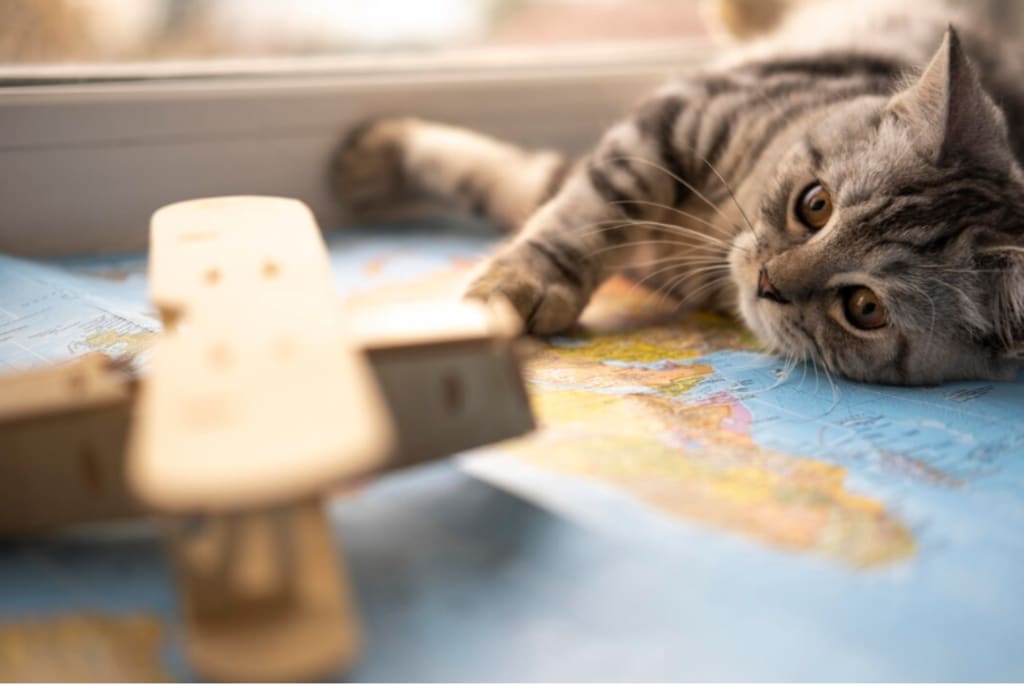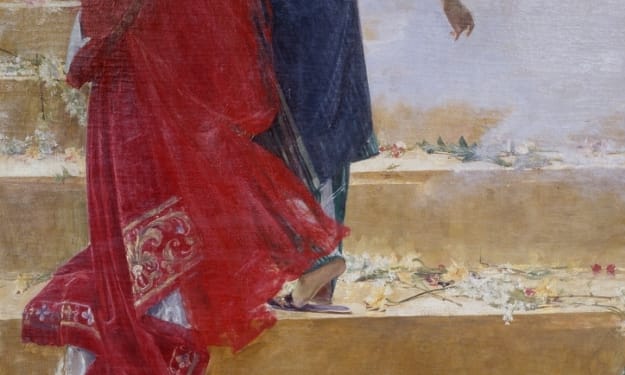The history of the world according to cats
Pawspective Through the Ages: Feline Perspectives on the Unwritten History of the World

On May 27th, 1941, the German war vessel Bismarck sank in a wild firefight, leaving just 118 of her 2,200 group individuals alive. However, when an English destroyer came to gather the detainees, they tracked down an unforeseen survivor - a high contrast feline sticking to a drifting board. For the following a while this feline chased rodents and raised English spirit - until an unexpected torpedo strike broke the body and sank the boat. Be that as it may, marvelously, not the feline. Nicknamed Resilient Sam, he rode to Gibraltar with the protected team and filled in as a boat feline on three additional vessels - one of which likewise sank - prior to resigning to the Belfast Home for Mariners. Many may not consider felines useful mariners, or helpful associates of any sort. Be that as it may, felines have been working close by people for millennia - helping us similarly as frequently as we help them. So how did things turn out from wild hunter to maritime official to couch companion? The taming of the advanced house feline can be followed back to over quite a while back in the Rich Sickle, toward the beginning of the Neolithic period. Individuals were figuring out how to twist nature to their will, delivering significantly more food than ranchers could eat at one time. These Neolithic ranchers put away their abundance grain in huge pits and short, earth storehouses. Yet, these stores of food pulled in swarms of rodents, as well as their hunter, Felis silvestris lybica - the wildcat tracked down across North Africa and Southwest Asia. These wildcats were quick, savage, flesh eating trackers. Also, they were astoundingly comparative in size and appearance to the present homegrown felines. The fundamental distinctions being that old wildcats were more strong, had striped covers, and were less friendly towards different felines and people. The wealth of prey in rat plagued silos attracted these regularly lone creatures. Also, as the wildcats figured out how to endure the presence of people and different felines during supper time, we feel that ranchers in like manner endured the felines in return with the expectation of complimentary bug control. The relationship was helpful to the point that the felines moved with Neolithic ranchers from Anatolia into Europe and the Mediterranean. Vermin were a significant scourge of the seven oceans. They ate arrangements and troubled lines of rope, so felines had since a long time ago become fundamental cruising buddies. Around a similar time these Anatolian globe jogging felines set forth, the Egyptians trained their own neighborhood felines. Venerated for their capacity to dispatch venomous snakes, get birds, and kill rodents, homegrown felines became vital to Egyptian strict culture. They acquired eternality in frescos, symbolic representations, sculptures, and even burial chambers, embalmed close by their proprietors. Egyptian boat felines traveled the Nile, holding harmful waterway snakes under control. Furthermore, in the wake of graduating to bigger vessels, they also started to move from one port to another. During the hour of the Roman Domain, ships going among India and Egypt conveyed the genealogy of the focal Asian wildcat F. s. ornata. Hundreds of years after the fact, in the Medieval times, Egyptian felines journeyed up to the Baltic Ocean on the boats of Viking sailors. Furthermore, both the Close to Eastern and North African wildcats - most likely subdued right now - - kept on traversing Europe, in the end heading out for Australia and the Americas. Today, most house felines have slid from either the Close to Eastern or the Egyptian heredity of F.s.lybica. However, close examination of the genomes and coat examples of present day felines lets us know that not at all like canines, which have gone through hundreds of years of particular rearing, current felines are hereditarily basically the same as old felines. Also, aside from making them more friendly and tame, we've done essentially nothing to adjust their regular ways of behaving. All in all, felines today are pretty much as they've forever been: Wild creatures. Furious trackers. Animals that don't consider us to be their guardians. Also, given our long history together, they probably won't be off-base.
About the Creator
Enjoyed the story? Support the Creator.
Subscribe for free to receive all their stories in your feed. You could also pledge your support or give them a one-off tip, letting them know you appreciate their work.





Comments
There are no comments for this story
Be the first to respond and start the conversation.